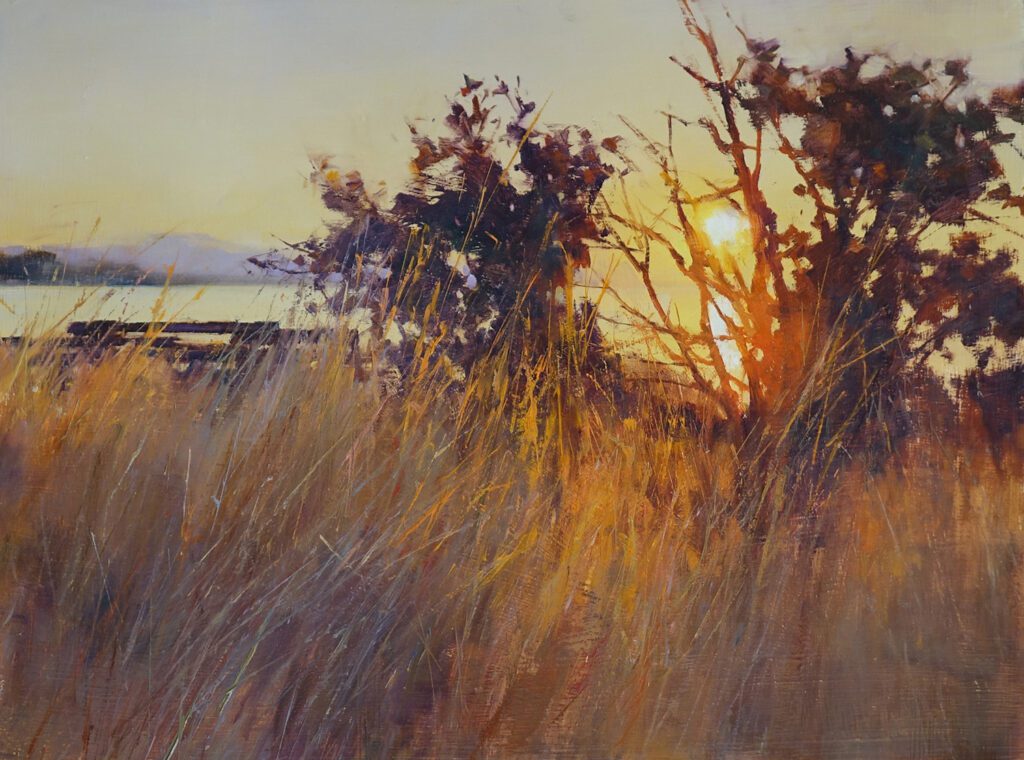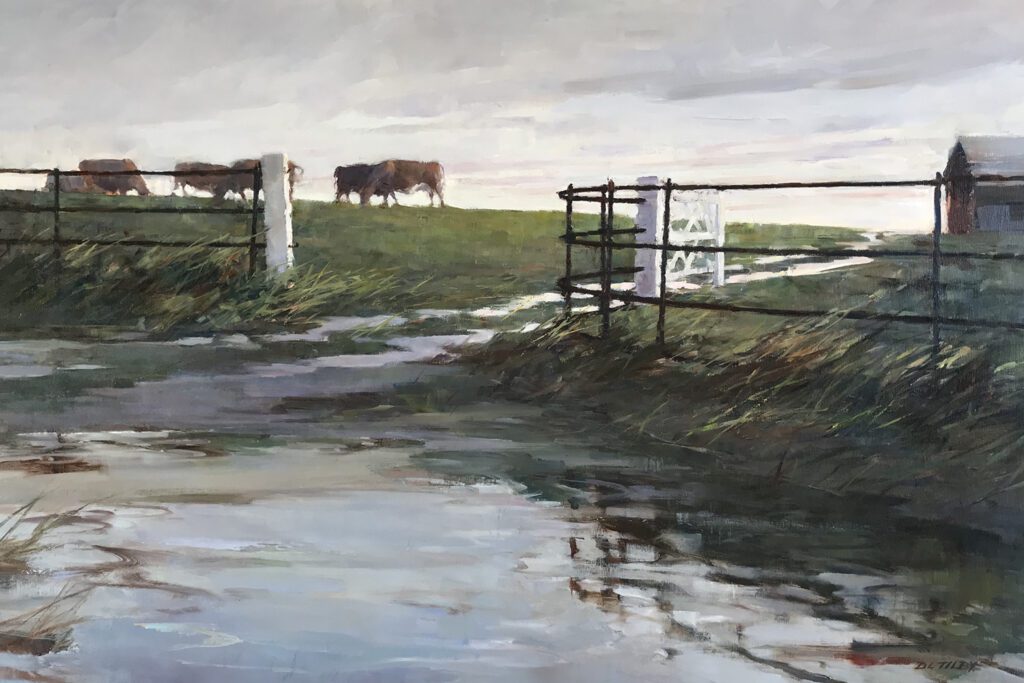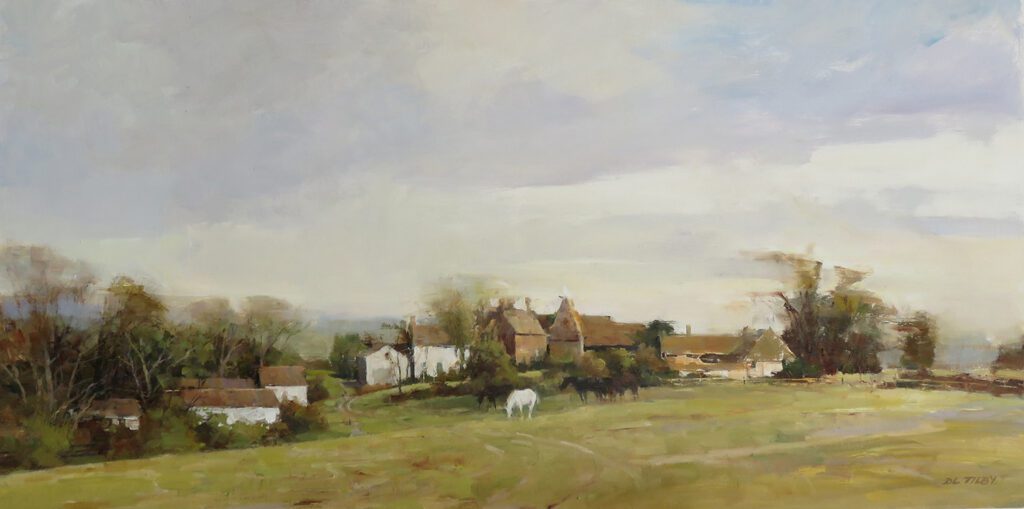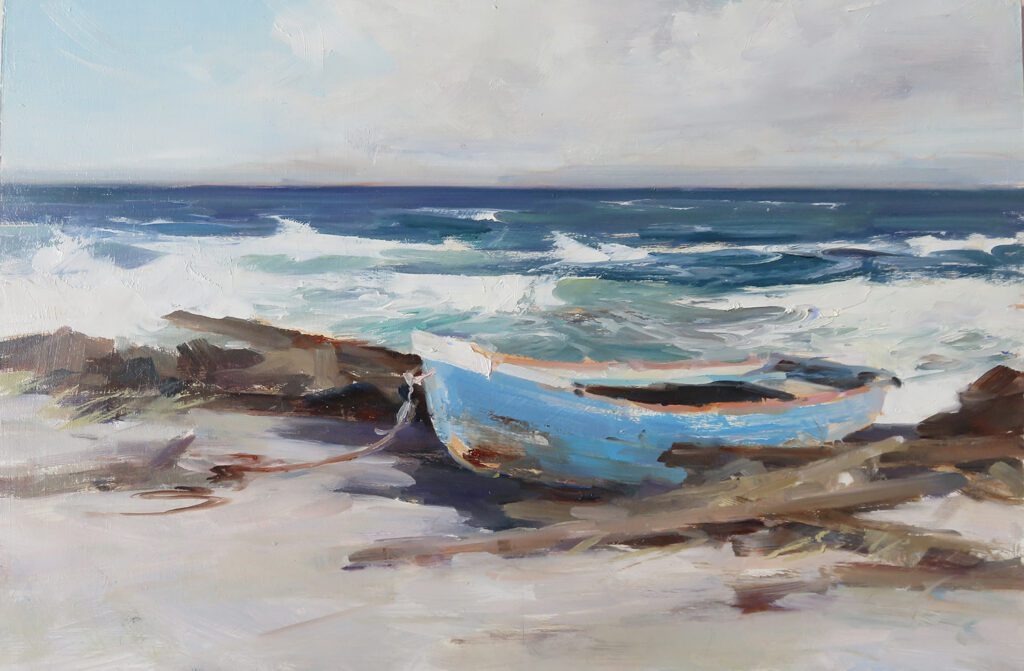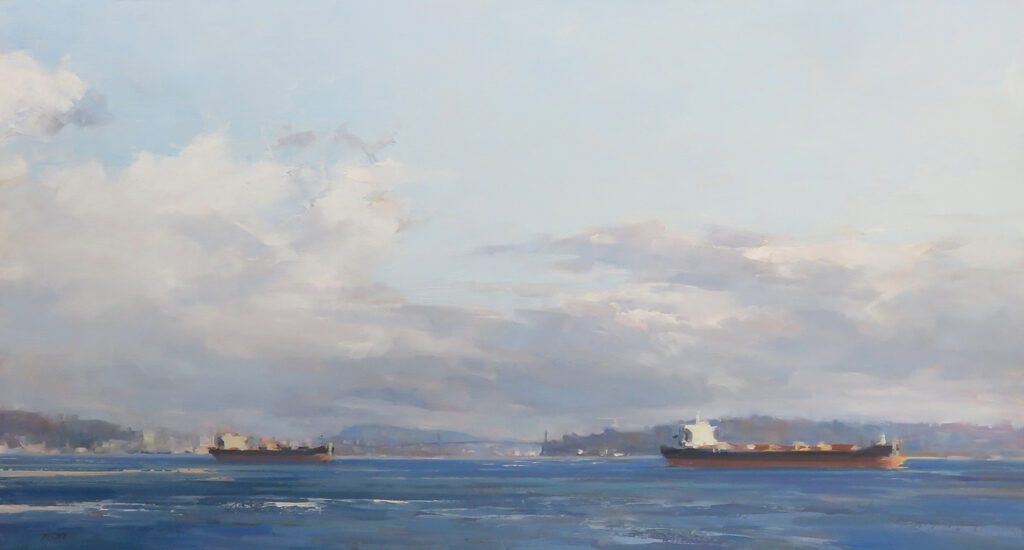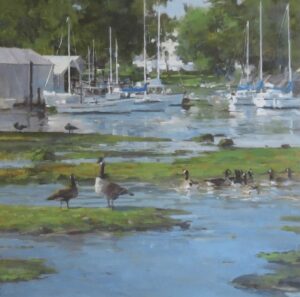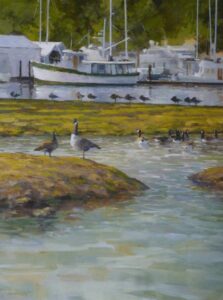The topic of skies in the landscape comes up all the time with my private students and is a subject with which many painters struggle. I thought I would share a few things I have learned.
I will start with the most obvious, which is that the sky sets the tone of the painting. If you are depicting a sunset, sunrise, cloudy day, fog or even bright midday sun, the sky should convey that mood. Care must be taken to make sure that the mood established in the sky is carried through the rest of the landscape.
Newer painters often forget that everything in a painting must be bathed in the same light. This means that the landscape must reflect the sky in temperature of light. This is obvious when painting a strong sunrise or sunset, but can be easy to miss when painting a scene with subdued light, especially when the light is a cooler color temperature. For example, if the sky’s light is cool and the artist paints the reflected light a warm color temperature, the painting simply will not work. The same temperature MUST be carried throughout the entire painting.
The sky is also an important compositional device and has much to contribute to the overall design. For example, when there are strong diagonals within the landscape, clouds can be arranged to counterbalance with diagonals of their own in the opposite direction (in a subtle manner of course!) Another example is when the painting contains a series of horizontals in its land forms, the artist can choose to either echo the effect with more horizontals in the clouds, or contrast with more vertical cloud formations.
Often times the sky contributes to the overall success of the painting by being subdued in form, value and color, while still playing an important role in setting the mood. If the landscape or seascape is very complex with lots going on, the sky needs to be very low contrast and subtle so as not to draw attention away from the busier areas of the painting.
The mistake I see most often with my novice students, and sometimes elsewhere, is the habit of painting a blue sky with a color that is very intense and/or far too dark, particularly a dark Ultramarine Blue. This takes all the light out of the sky, and makes it look artificial. Remember to squint to see how light in value the sky really is in comparison to the other planes of the landscape.
Also, it is important to remember when painting clouds, our job is to give the impression that they are light, airy and full of moisture; they are not solid objects. In an impressionistic painting, all sorts of colors can be introduced into the clouds, just remember to keep the colors subdued to avoid making them look heavy.
So…pay attention to the sky in all stages of your painting and do not make it an afterthought! Better to plan the design, values, temperature, intensity and edges right from the beginning.
Deborah Tilby SFCA, OPAM
